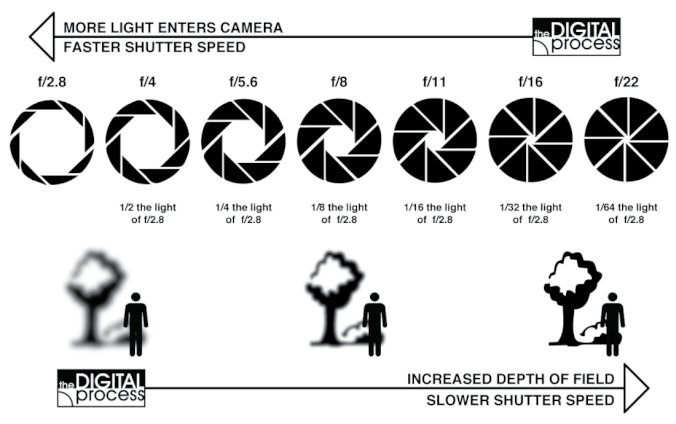


Looking closely you can see how his right eye is slightly out of focus, and further back his left ear is completely out of focus.Īnd while it's a perfectly fine portrait, if you wanted both of the man's eyes to be sharply focused, you'd need to use a smaller aperture to increase the depth of field. In the screenshot above, you can see how the plane of focus is very narrow on the man's left eye. Aperture Examples: Portraits and Depth of FieldĪs Matt points out in the video, when shooting portraits at a very, very large aperture (like f/1.8), there is a very shallow depth of field. These lenses are often quite expensive, which is why we recommend looking for good pre-owned lenses to save yourself some money. Editor's Tip: Lenses with very large apertures are called "fast lenses," because the amount of light they can collect enables you to use a slower shutter speed without sacrificing a good exposure. That's why portraits (like the one above) are often shot with a large aperture opening (to blur the background behind the subject) and landscapes are shot with a smaller aperture opening (to maintain a large depth of field).īut as noted in the introduction, getting the best results means that you can't always just use a large aperture for portraits and a small aperture for landscapes. In addition to controlling the amount of light that enters the camera, aperture is also one of the factors that influence the depth of field of a shot, or the area of the image that's in sharp focus.Ī large aperture (i.e., f/2) generates a very shallow depth of field while a small aperture (i.e., f/22) generates a very large depth of field. Likewise, a large f-stop number (i.e., f/22) is actually a very small aperture opening. What confuses many beginners is that the size of the aperture is inversely related to its number, so a small f-stop number (i.e., f/2) is actually a very large aperture opening. A Quick Refresher on ApertureĪperture is responsible for controlling the amount of light that enters the lens, and therefore hits the camera sensor.Ī very large aperture opening lets in lots of light a very small aperture opening lets in much less light.Īperture is measured in f-stops, which indicate how large or small the aperture opening is.
SMALL VS BIG APERTURE HOW TO
Instead, he outlines a few aperture examples to help you understand how to get the best results in your photos.įor an outline of Matt's tips, check out the article below. In the video above, Matt Granger offers up a few aperture tips that go beyond the simple statements above. One of the primary questions that beginner photographers have about aperture is simply what aperture to use.Īnd while there are often choruses of "shoot wide for portraits" and "close the aperture down for landscapes," it's not as clear-cut as that.


 0 kommentar(er)
0 kommentar(er)
